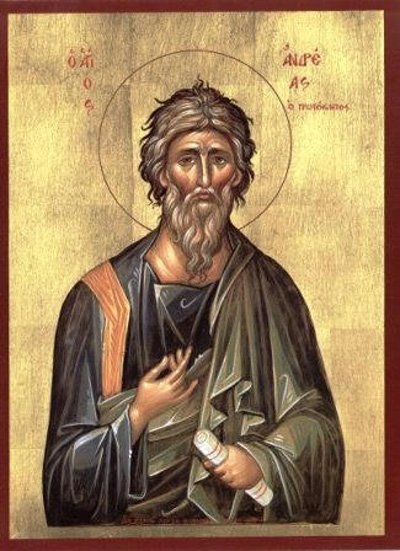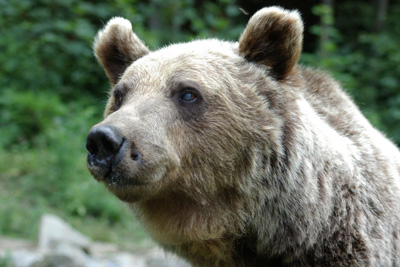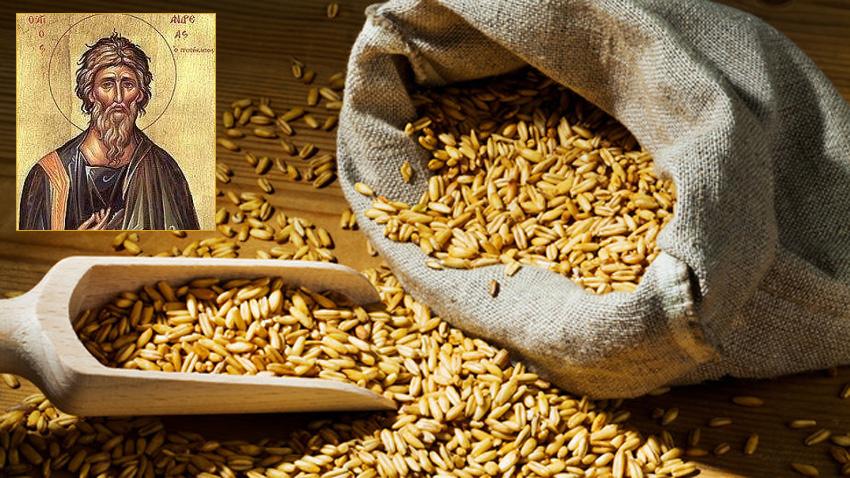In folklore tradition, St. Andrew's Day (Andreevden, Andreya, Dreyovden) is one of a string of fetes when fertility over the coming year has to be ensured. There is one ritual that is most popular of all - throwing boiled corncobs or other pulses up into the air while uttering incantations. St. Andrew's Day always falls on 30 November - the day the Bulgarian Orthodox Church reveres the memory of Andrew, the Apostle, (Andrey) also known as the First-called.
 Andrew, who searched for godliness since he was a little child, was a disciple of John the Baptist. One day he was standing by the Jordan River when his teacher pointed to Christ and said: Here is the Lamb of God! And Andrew followed Christ, spending the entire day with him. He was the first to have been called upon to follow the Saviour, so he was named the First-called. Andrew and his brother Peter were fishermen. After they met Christ, they would follow him everywhere and together with the other apostles, witnessed Christ's miracles, his death and his resurrection.
Andrew, who searched for godliness since he was a little child, was a disciple of John the Baptist. One day he was standing by the Jordan River when his teacher pointed to Christ and said: Here is the Lamb of God! And Andrew followed Christ, spending the entire day with him. He was the first to have been called upon to follow the Saviour, so he was named the First-called. Andrew and his brother Peter were fishermen. After they met Christ, they would follow him everywhere and together with the other apostles, witnessed Christ's miracles, his death and his resurrection.
In folklore tradition, Andrew the Apostle is very different, though there are certain similarities in his passional. For example, in towns and villages along the Southern portion of the Black Sea coastline he is revered, alongside St. Nicholas (Nikola) as the patron saint of sea storms and tempests - probably because he was himself a fisherman. In Southwestern Bulgaria it is believed that St. Andrew is St. Nicholas' father. It is said that on St. Andrew's Day the day begins to grow by one grain of millet each day - in some parts the fete goes by the name of Edrey or Edrevden (derived from the Bulgarian word edreya, grow.)
Legumen are vital to the fete. Even in our day, many families observe the tradition of eating boiled maize, wheat, beans, lentils, spelt, peas, barley. Curiously enough, maize is centre-stage in all rituals connected with the day of St. Andrew. Having been brought to Europe as late as the end of the 15th and the early 16th century, maize is now one of the most widespread crops in the country. Little by little, it supplanted millet as food for humans and farm animals. Maize is used to make bread, though people still call it prosenik (from the Bulgarian word proso, millet). And one more curious fact - according to prominent ethnographer Dimitar Marinov, bread made out of maize must not be thurified or taken to church.
 On the night before St. Andrew's Day the women of the house would put maize in water to soak. Early the next morning they would put it inside a new pot and add a few grains of everything that grows in the field and in the garden. Depending on local tradition, they would also add pumpkin seeds, plums and pears. When the ritual pot was ready, each family would throw a few grains up into the chimney with wishes for all things planted to thrive and bear fruit, a little of each plant, and for the crops to grow waist-high. The swelling of the grains when boiled was seen as a symbol of the growing of the crops. And also - of the pregnancy of young brides and fertility as such. On this day brides are not allowed to work, so they may “grow big with child” during the year.
On the night before St. Andrew's Day the women of the house would put maize in water to soak. Early the next morning they would put it inside a new pot and add a few grains of everything that grows in the field and in the garden. Depending on local tradition, they would also add pumpkin seeds, plums and pears. When the ritual pot was ready, each family would throw a few grains up into the chimney with wishes for all things planted to thrive and bear fruit, a little of each plant, and for the crops to grow waist-high. The swelling of the grains when boiled was seen as a symbol of the growing of the crops. And also - of the pregnancy of young brides and fertility as such. On this day brides are not allowed to work, so they may “grow big with child” during the year.
Throwing grains up into the chimney is a form of sacrifice. It is done in the belief that it is a symbolic way of feeding the bears, so they shall not do any mischief like damaging the crops, especially the maize. This is a belief that is rooted in real life - the fields closest to woodland or bordering on forests were ravaged by wild beasts all the time. There are St. Andrew's Day incantations that go like this: “Take this boiled maize, bear, so you won't eat it raw!” or “Take this corncob, bear, but give us life and health!”
Bears are principal characters in the folklore narratives of St. Andrew in which he vanquishes and subdues the wild beasts. Hence one more name for this fete - Mechkinden (Bear day). In some towns and villages in Southern Bulgaria the same rituals are performed on 4 December, the day of the Great Martyr Barbara (Varvara).

English version: Milena Daynova
The Bulgarian village of Turia at the southern foothill of the Balkan Range is welcoming over a thousand participants in the Masquerade Games "Old Men in Turia". This year's edition of the festival on 30 March will feature 28 mummers' groups from all..
"In a vast region in northern Bulgaria, St. Todor is somehow perceived as a demonic character... He visited gatherings of unmarried girls, which were prohibited during that period; he acquired the appearance of a young bachelor, but distinguishable by..
Thousands of cowbells of different sizes and shapes filled the streets of Yambol with chiming, jingling and ringing at the 25th International Masquerade Festival "Kukerlandia". Згдшд More than two thousand mummers - called kukeri, sourvakari,..

+359 2 9336 661
